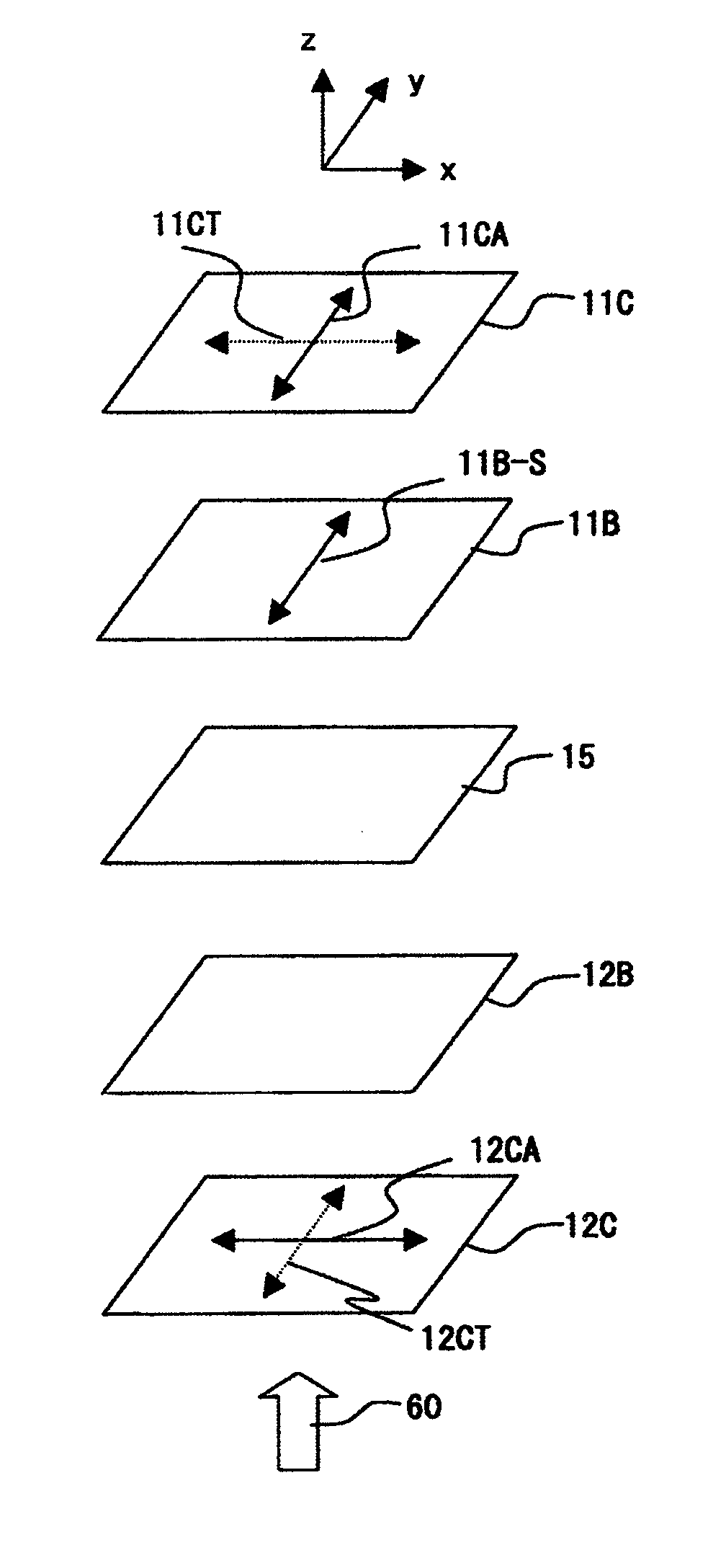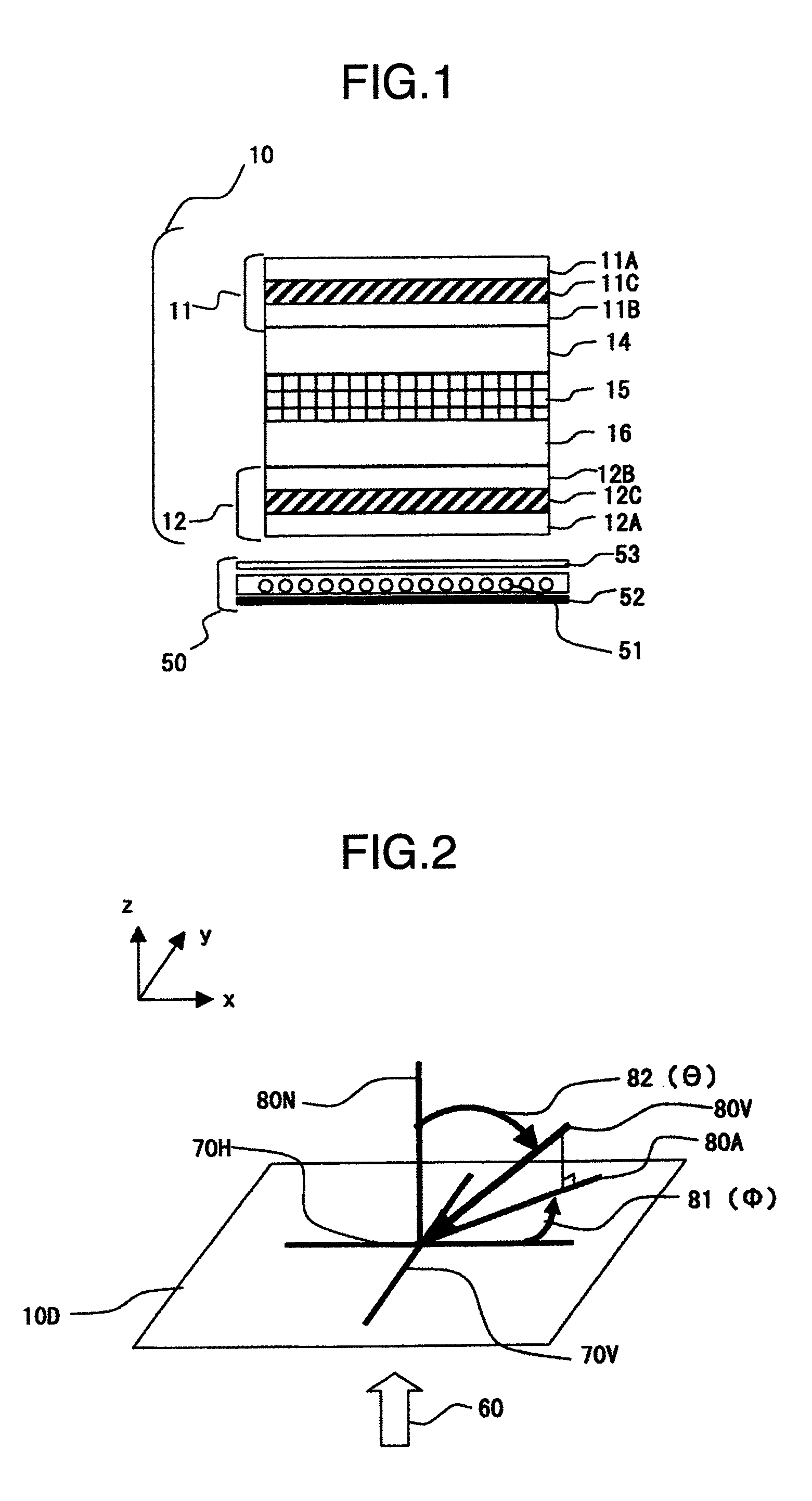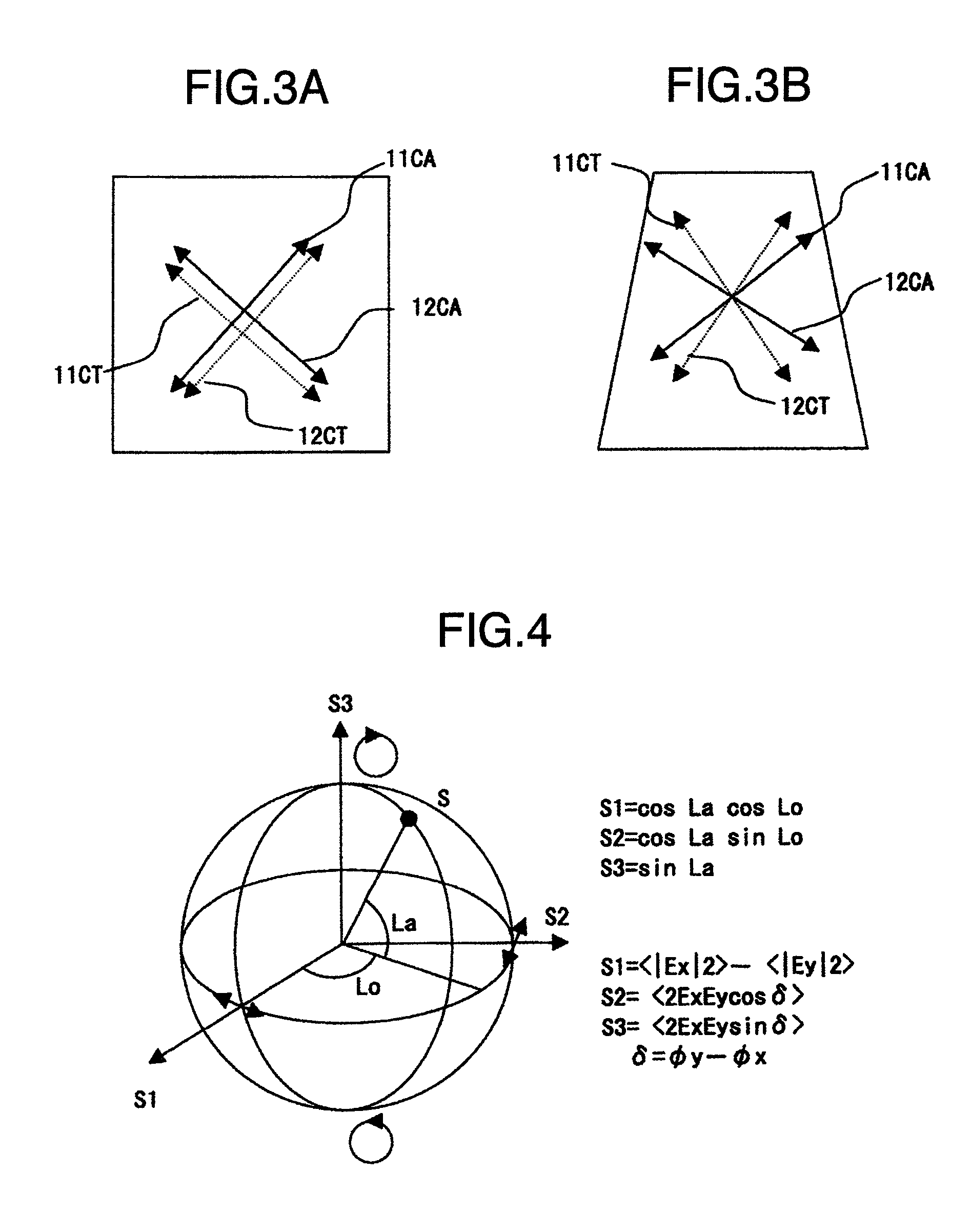Liquid crystal display device
a liquid crystal display and display device technology, applied in non-linear optics, instruments, optics, etc., can solve the problems of reducing the cr ratio when viewed at an oblique angle, deteriorating color reproduction at low grayscale levels, etc., to achieve high cr ratio, improve tonality, and improve color reproduction.
- Summary
- Abstract
- Description
- Claims
- Application Information
AI Technical Summary
Benefits of technology
Problems solved by technology
Method used
Image
Examples
embodiment 1
[0086]A structure of this embodiment is shown in FIG. 1 and its optical configuration in FIG. 6. When long axes of bent type liquid crystal molecules in a substrate parallel plane are aligned uniformly in an x direction, refractive indices in principal axis directions are nx=1.58, ny=1.5 and nz=1.6. The liquid crystal layer is 4.0 μm thick. The polarization plate support member 12B is formed of norbornene-type resin and has an Nz coefficient of 3.0 and a retardation of 30 nm when viewed from the front. The polarization plate support member 11B is formed of norbornene-type resin and has an Nz coefficient of 4.0 and a retardation of 40 nm when viewed from the front. During black mode, the liquid crystal layer has a uniform refractive index in the substrate parallel surface of (nx+ny) / 2=1.54 and a refractive index in substrate normal direction of nz=1.6. These calculation results are shown in FIG. 18. The abscissa represents a viewing angle (azimuth angle) at a polar angle of 60 degree...
embodiment 2
[0088]The construction of this embodiment is shown in FIG. 1 and its optical configuration in FIG. 6. When the long axes of the bent type liquid crystal molecules in the substrate parallel plane are uniformly aligned in the x direction, refractive indices in the principal axis directions are nx=1.58, ny=1.5 and nz=1.6, respectively. The liquid crystal layer is 4.0 μm thick. In this embodiment, the polarization plate support members 11B and 12B commonly use norbornene-type resin and have an Nz coefficient of 3.0 and a retardation in the front direction of 40 nm. A viewing angle dependency of the transmissivity at a viewing angle (polar angle) of 60 degrees in black mode is shown in FIG. 21.
embodiment 3
[0089]The construction of this embodiment is shown in FIG. 1 and its optical configuration in FIG. 8. When the long axes of the bent type liquid crystal molecules in the substrate parallel plane are uniformly aligned in the x direction, refractive indices in the principal axis directions are nx=1.6, ny=1.52 and nz=1.51, respectively. The liquid crystal layer is 4.0 μm thick. In this embodiment, the polarization plate support members 11B and 12B commonly use polycarbonate resin and have an Nz coefficient of −1.0 and a retardation in the front direction of 50 nm. A viewing angle dependency of the transmissivity at a viewing angle (polar angle) of 60 degrees in black mode is shown in FIG. 22.
PUM
| Property | Measurement | Unit |
|---|---|---|
| angle | aaaaa | aaaaa |
| “angle | aaaaa | aaaaa |
| angle | aaaaa | aaaaa |
Abstract
Description
Claims
Application Information
 Login to View More
Login to View More - R&D
- Intellectual Property
- Life Sciences
- Materials
- Tech Scout
- Unparalleled Data Quality
- Higher Quality Content
- 60% Fewer Hallucinations
Browse by: Latest US Patents, China's latest patents, Technical Efficacy Thesaurus, Application Domain, Technology Topic, Popular Technical Reports.
© 2025 PatSnap. All rights reserved.Legal|Privacy policy|Modern Slavery Act Transparency Statement|Sitemap|About US| Contact US: help@patsnap.com



